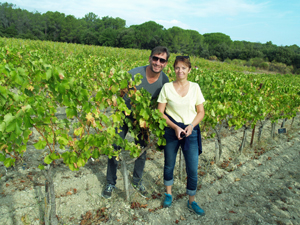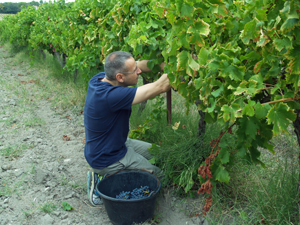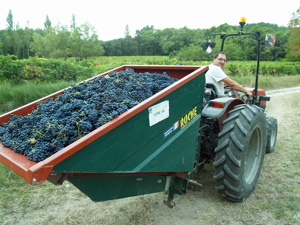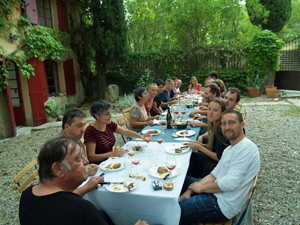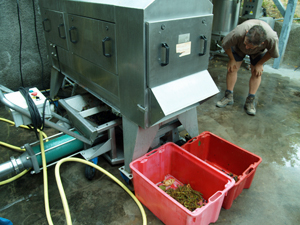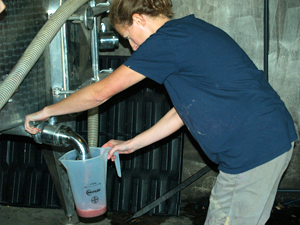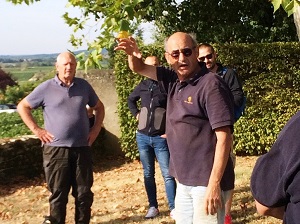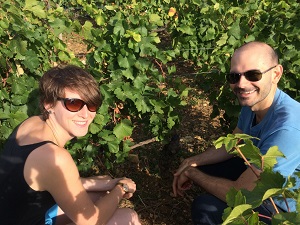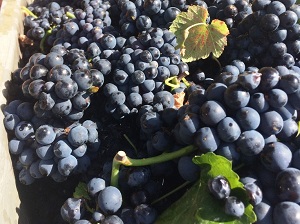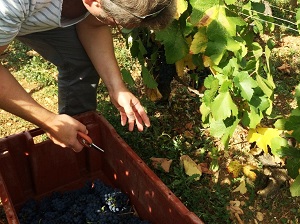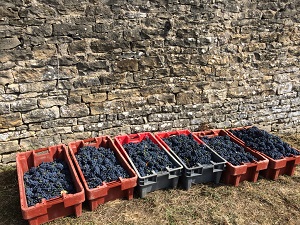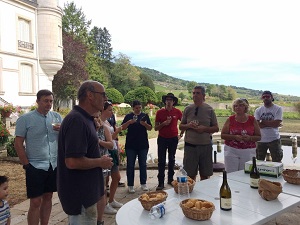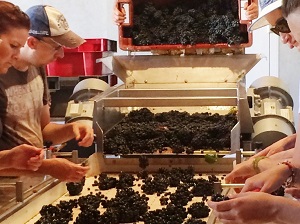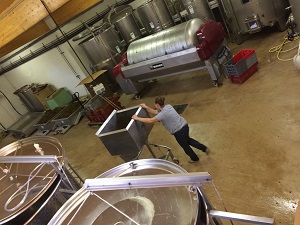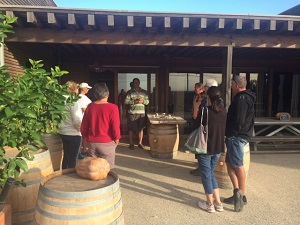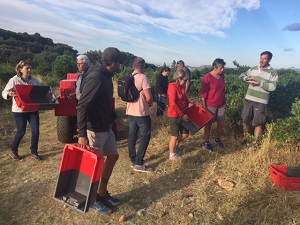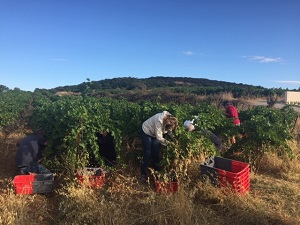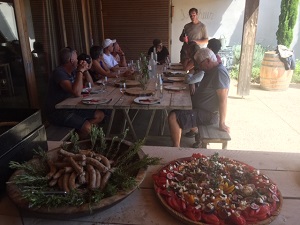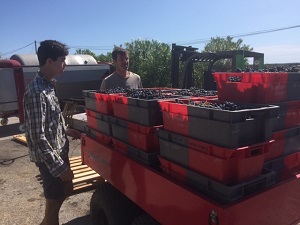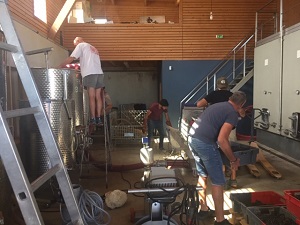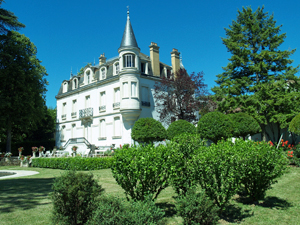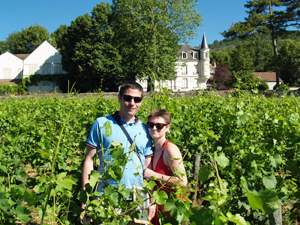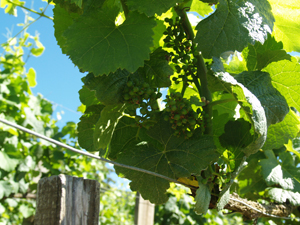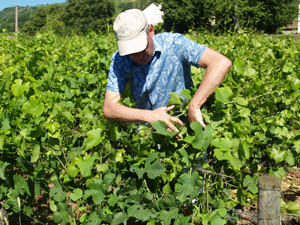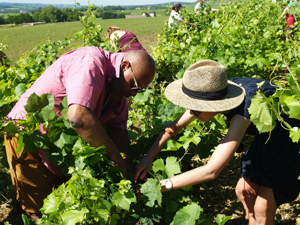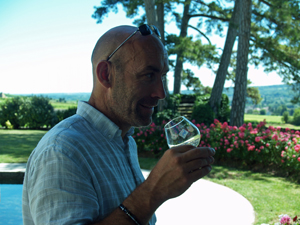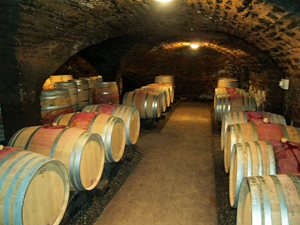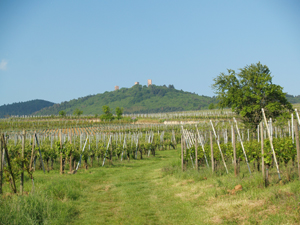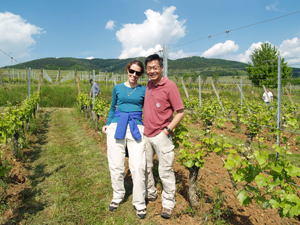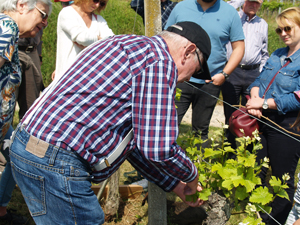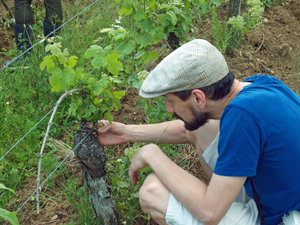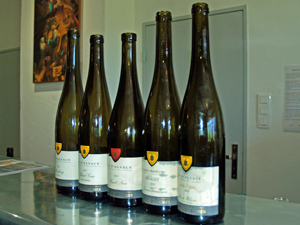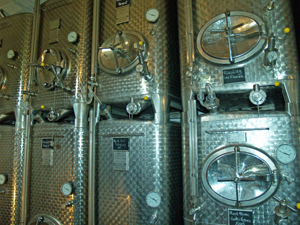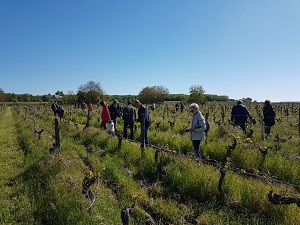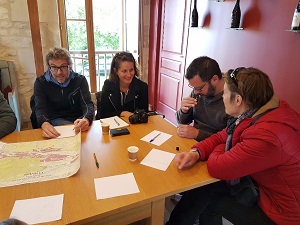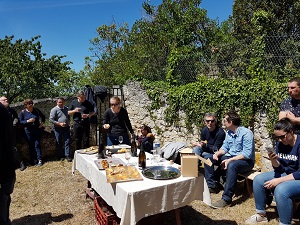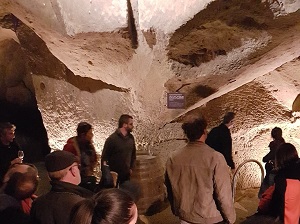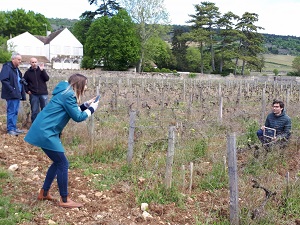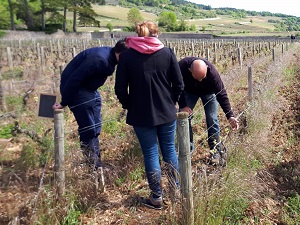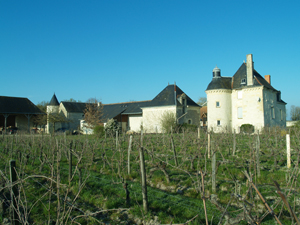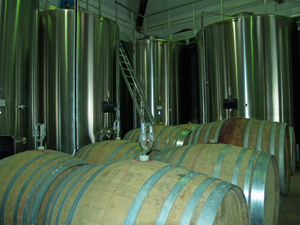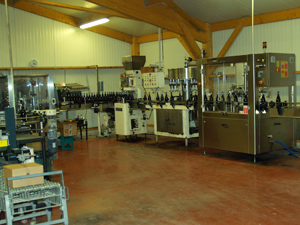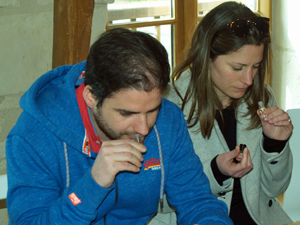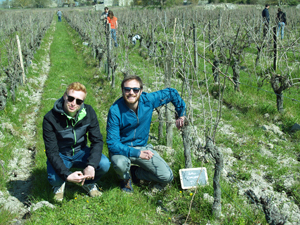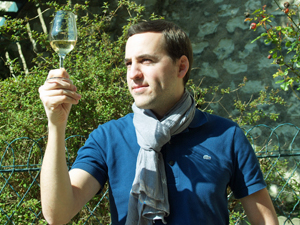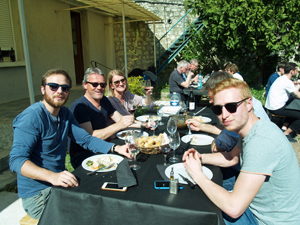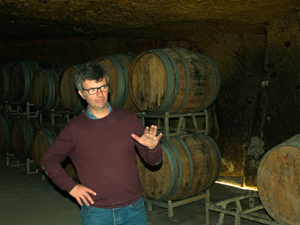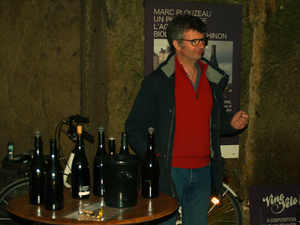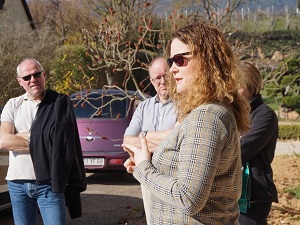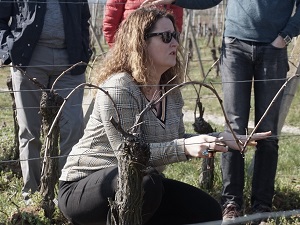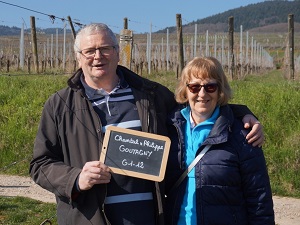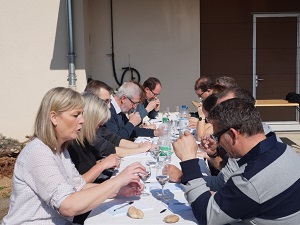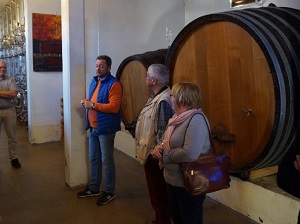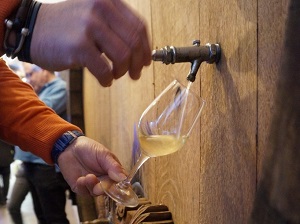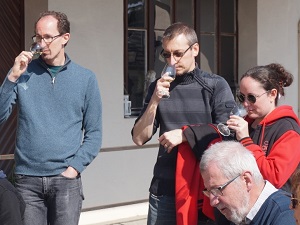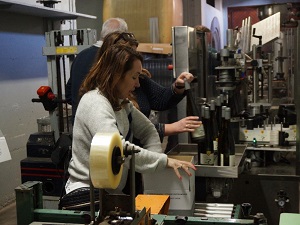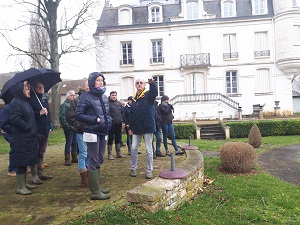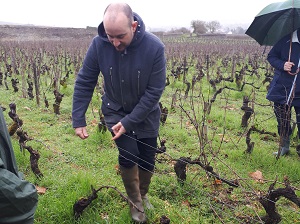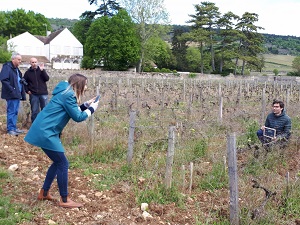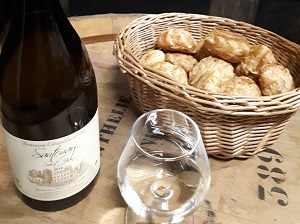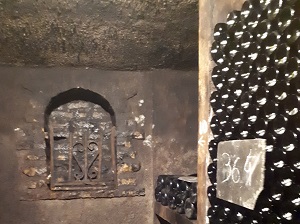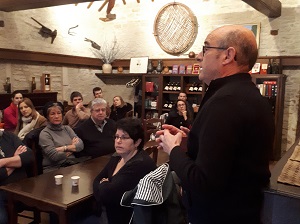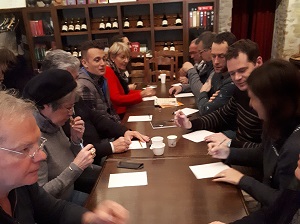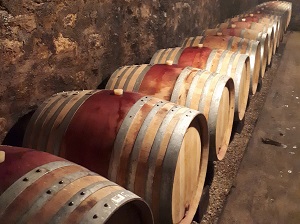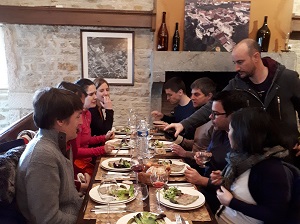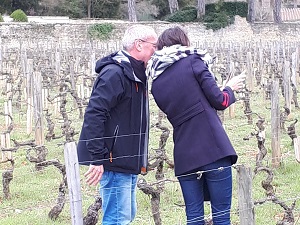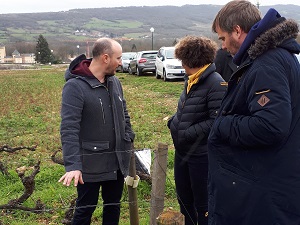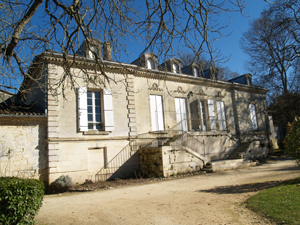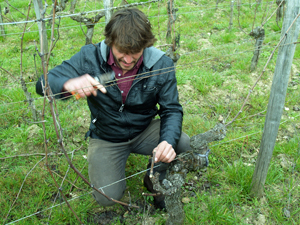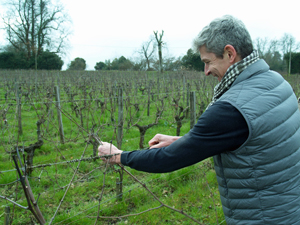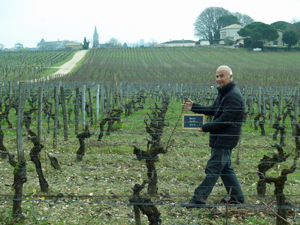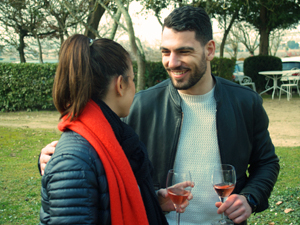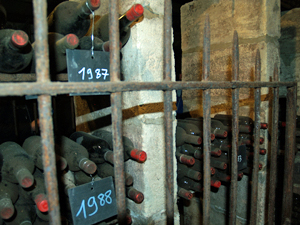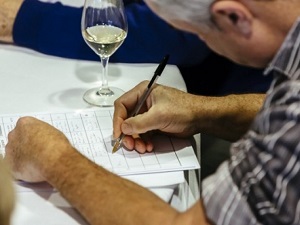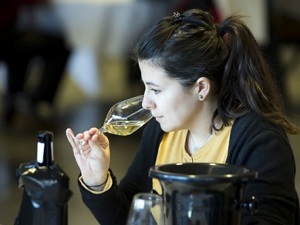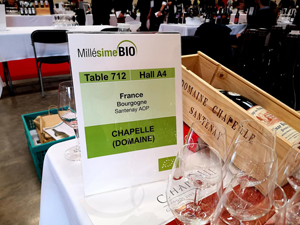It was a real pleasure to find ourselves back in the vineyard for the Discovery Experience Day at Domaine Stentz-Buecher in Alsace. Whilst we had been confined during the lockdown, the vines had been soaking up the sun and flourishing. The past few months had been very busy for the winemakers in the vineyard as we were to find out.
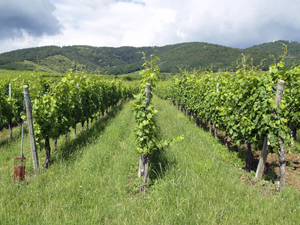
After the introductions, we headed out into the vineyard, respecting the new social distancing norms of course! Our first stop was the Rosenberg vineyard, where the Gourmet Odyssey adopted vines are located. We took a few minutes to find the nameplate in front of our vines, take a few pictures, and encourage them to produce some good grapes for this year’s harvest!
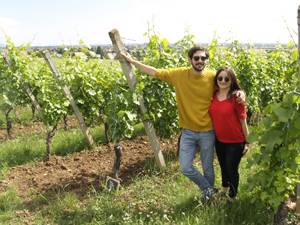
We were accompanied by Stéphane and Céline, the brother and sister duo that have now taken over the running of the winery from their parents. Stéphane explained the work that had been done in the vineyard over the winter to prune the vines and work the soil.
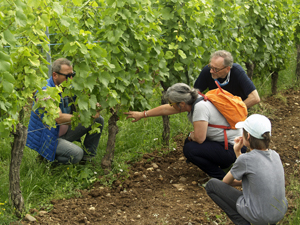
The relatively mild winter, and then the hot and sunny weather that has prevailed in France for most of the time since the beginning of the lockdown in mid-March, has meant that the vines have been thriving and have developed much faster than normal. We could see that the grapes had already formed on the vines, and were at a stage that you would normally expect to see in July. The flowering period had happened at the end of May in great climatic conditions.
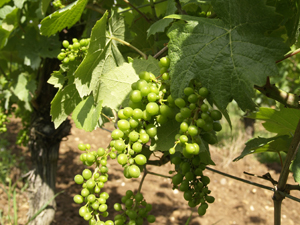
We then headed to the neighbouring plot of vines, which had been replanted three years ago. Stéphane explained the life cycle of the vines and how they are replanted. This year will be the first time that the grapes will be harvested. He explained how they have been pruned to form the desired shape. Despite the pruning carried out in March, some of the vines had sprouted shoots from the trunk that are unwanted, so our job for the morning was to remove them, thus enabling the vines to concentrate their energy on the fruit-bearing branches, and to maintain their form.
We spread out amongst the rows and carefully removed the unwanted shoots. The vines might be higher in Alsace than in other regions of France, but this job still involves lots of bending over!
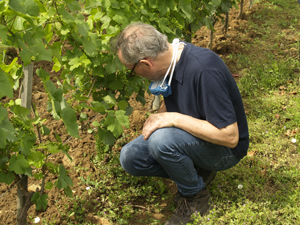
Domaine Stentz-Buecher, like all of the Gourmet Odyssey partner wineries, is organically certified, and Stéphane explained the organic methods that they use to work the soil and protect the vines from odium and mildew.
Back at the winery, we sat down to enjoy some of the wines from the winery. The wine tasting session, guided by Céline, started with the refreshing Crémant d’Alsace pink sparkling wine. This is the first year that the winery has made a rosé sparkling wine, and it received the thumbs up from all. 100% pinot noir, it has a good structure, whilst retaining the freshness and acidity that you expect from a sparkling wine.
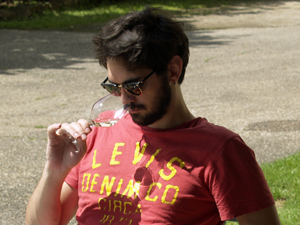
We then tasted the 2018 Riesling Tradition and the 2018 Muscat Rosenberg, before tasting the 2018 vintage of the Pinot Gris Rosenberg, which is the wine chosen for the Gourmet Odyssey adopt-a-vine clients. Céline explained how the grape yields are voluntarily kept well below the limits authorised in Alsace, which results in the very aromatic, rich, and complex wines that characterise those produced by Domaine Stentz-Buecher. We then tasted the 2017 Pinot Noir Tradition, and concluded the wine tasting session with the delicious 2016 Gewurztraminer Hengst Grand Cru, with a slice of the local lardon and walnut savoury Kouglof.
We continued tasting the wines and local delicacies over lunch of the typical baeckeoffe, a selection of local cheeses, and blueberry tart, accompanied by the 2018 Pinot Blanc Tradition and the 2017 Gewurztraminer Rosenberg.
In the afternoon, Stéphane explained the work left to do over the summer in the vineyard, and how the date of the harvest will be chosen for each individual vineyard plot and grape varietal.
Stéphane then took us on a tour of the cellar, starting with where the grapes will be received and pressed at harvest time. He showed us the barrel room where the pinot noir wines are aged in oak barrels.
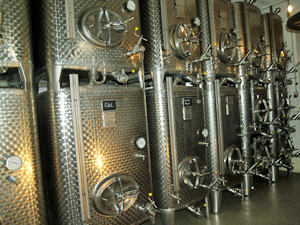
We ended the day in the room where the white wines are aged, either in huge old oak casks, or smaller stainless steel vats. Stéphane’s explanations were accompanied by the intermittent gurgling sounds of some of the vats where the wines were still fermenting!
Many thanks to all of the participants and to Céline and Stéphane for sharing the passion for their profession. We look forward to coming back in September for the Harvest Experience Day!



